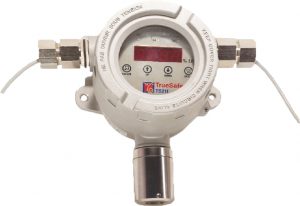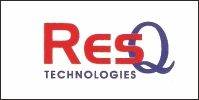 The purpose of this article is to have awareness & importance of Industrial Gas leak detectors in industrial market segment. By implementing gas detectors in industries even if one plant save during crisis, the objective of this paper would be served.
The purpose of this article is to have awareness & importance of Industrial Gas leak detectors in industrial market segment. By implementing gas detectors in industries even if one plant save during crisis, the objective of this paper would be served.
Gas detectors measure and indicate the concentration of certain gases in an air via different technologies. Typically employed to prevent toxic exposure and fire, gas detectors are often battery operated devices used for safety purposes. They are manufactured as portable or stationary (fixed) units and work by signifying high levels of gases through a series of audible or visible indicators, such as alarms, lights or a combination of signals. While many of the older, standard gas detector units were originally fabricated to detect one gas, modern multifunctional or multi-gas devices are capable of detecting several gases at once. Some detectors may be utilized as individual units to monitor small workspace areas, or units can be combined or linked together to create a protection system.
As detectors measure a specified gas concentration, the sensor response serves as the reference point or scale. When the sensors response surpasses a certain pre-set level, an alarm will activate to warn the user. There are various types of detectors available and the majority serves the same function: to monitor and warn of a dangerous gas level. However, when considering what type of detector to install, it is helpful to consider the different sensor technologies.
Gas Detector Technologies :- Gas detectors are categorized by the type of gas they detect: combustible or toxic. Within this broad categorization, they are further defined by the technology they use: catalytic and infrared sensors detect combustible gases and electrochemical and metal oxide semiconductor technologies generally detect toxic gases.
Measurement of Combustible Gases :-
Catalytic sensors represent a large number of gas detector devices that are manufactured today. This technology is used to detect combustible gases such as hydrocarbon, and works via catalytic oxidation. The sensors of this type of detector are typically constructed from a platinum treated wire coil. As a combustible gas comes into contact with the catalytic surface, it is oxidized and the wiring resistance is changed by heat that is released. A bridge circuit is typically used to indicate the resistance change.
Infrared sensors or IR detectors work via a system of transmitters and receivers to detect combustible gases, specifically hydrocarbon vapors. Typically, the transmitters are light sources and receivers are light detectors. If a gas is present in the optical path, it will interfere with the power of the light transmission between the transmitter and receiver. The altered state of light determines if and what type of gas is present.
Common Gas Detector Applications
Although detectors are an essential application for home and commercial safety, they are also employed in numerous industrial industries. Gas detectors are used in welding shops to detect combustibles and toxics and in nuclear plants, to detect combustibles. They are also commonly used to detect hazardous vapors in wastewater treatment plants.
Gas detectors are very efficient in confined spaces where there is no continuous employee occupancy. Such spaces include tanks, pits, vessels and storage bins. Detectors may also be placed at a site to detect toxins prior to occupant entry.
The chemical industry is a major player in the global economy.
Leak Detection:
Leaks are an ever-present hazard even in the best run chemical plants. Depending on the severity of the leak and the gas involved, the effects can potentially be very serious both within and without the perimeter of the plant. An explosion or fire will damage plant and put workers at risk, while toxic gases can spread rapidly, also putting the public at risk. Even a minor small leak has an economic impact on the plant's profitability as material is being wasted and the fault has to be rectified. To monitor for leaks, fixed gas detectors are integrated into the plant at key weak points such as valves, joints and pumps. The sensors used will obviously depend on the nature of the gas to be detected. For flammable gases, pellistors are widely used. This sensor works by burning the target gas; the heat generated producing a change in the resistance of the detecting element of the sensor proportional to the gas concentration. To detect hydrocarbons, NDIR sensors are widely used. Ultrasonic gas leak detectors measure the ultrasonic sound level, typically between 25 kHz to 10 MHz frequencies. Ultrasonic gas detectors are mainly used for outdoor environments where weather conditions can easily dissipate escaping gas before allowing it to reach gas leak detectors that require contact with the gas in order to detect it. These detectors are most useful in facilities with a lot of outdoor pipeline.
Vighnaharta is the leading manufacturers of all types of Industrial gas detectors with Catalytic, Infrared & electrochemical sensors.
We are Make in India Company & presenting 'First Time in India, Infrared Type Industrial Gas leak detector' for Hydro Carbon.
Some Salient Features: –
1) Fast Speed of response.
2) Immune to catalytic poisons.
3) High Reliability & Repeatability.
4) Heated optics eliminates condensation.
5) Ability to operate in the absence of oxygen or in enriched oxygen.
Conclusions:-
As this brief overview shows, the gas sensor industry has developed a number of different technologies, each of which has strengths and weaknesses for use in specific applications. All manufacturers share a common purpose in improving the effectiveness of life and property protection in potentially dangerous environments. Advances in sensor design are generally aimed at producing faster response, greater specificity, better stability, longer life and greater reliability. In capital-intensive industries such as the chemical sector, which produces toxic, corrosive, explosive and flammable gases as a matter of routine, plant protection rightly has a very high priority. Add in the duty of care to the workforce, a reduction in emissions to reduce environmental damage and the need to prevent leaks that could affect the local population, the benefits from using today's gas detection advanced technology have never been more obvious. Thinking about new products & solutions which would make this world better to live.




















































